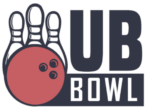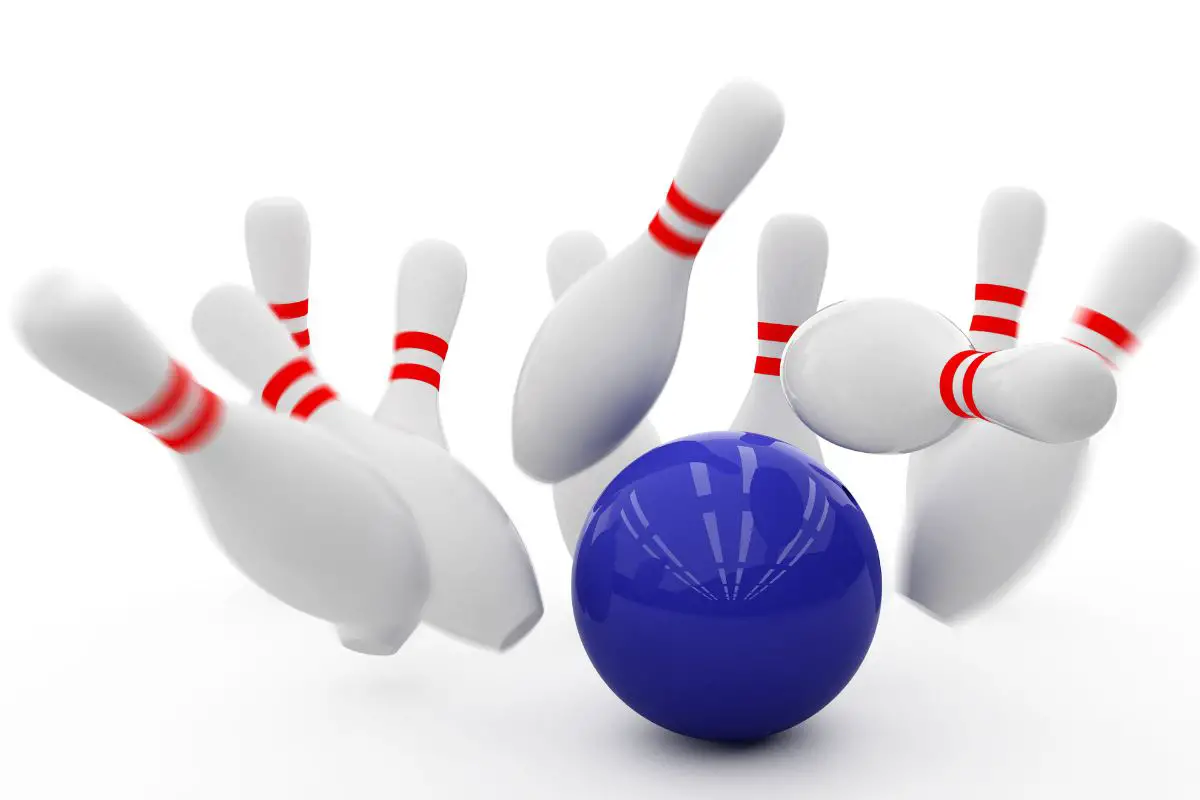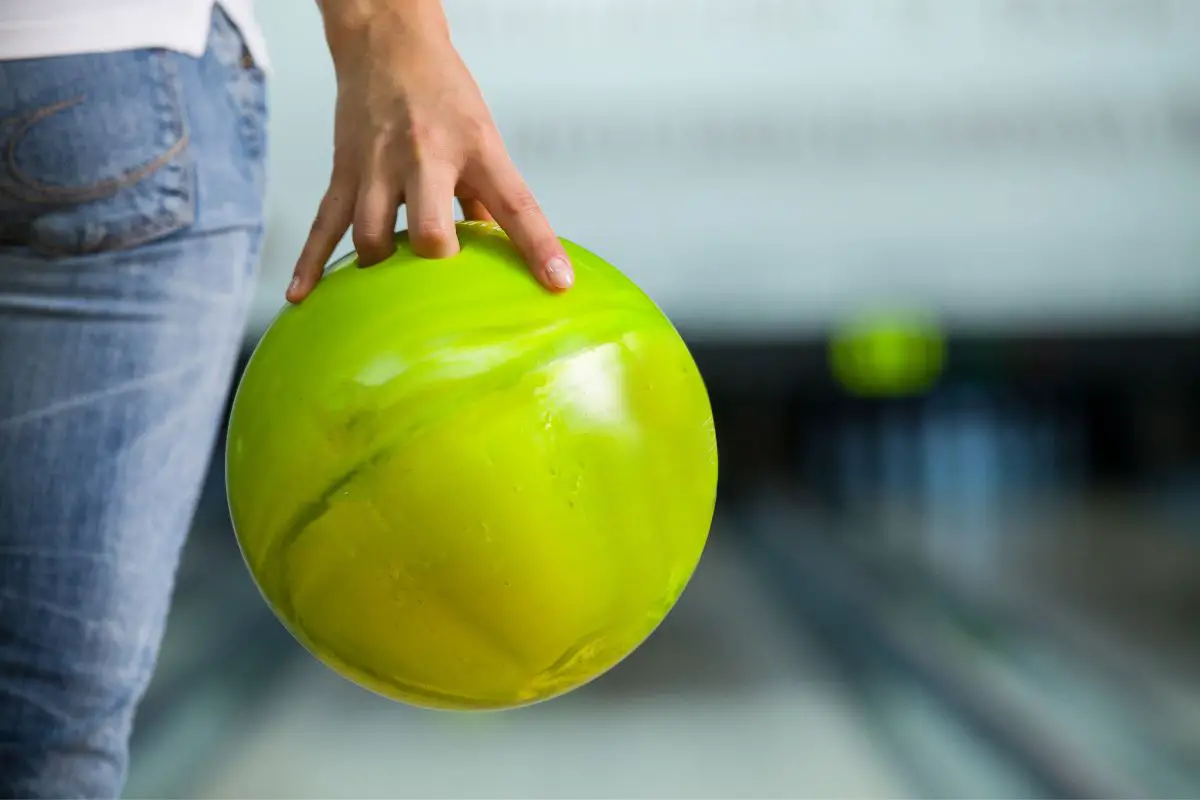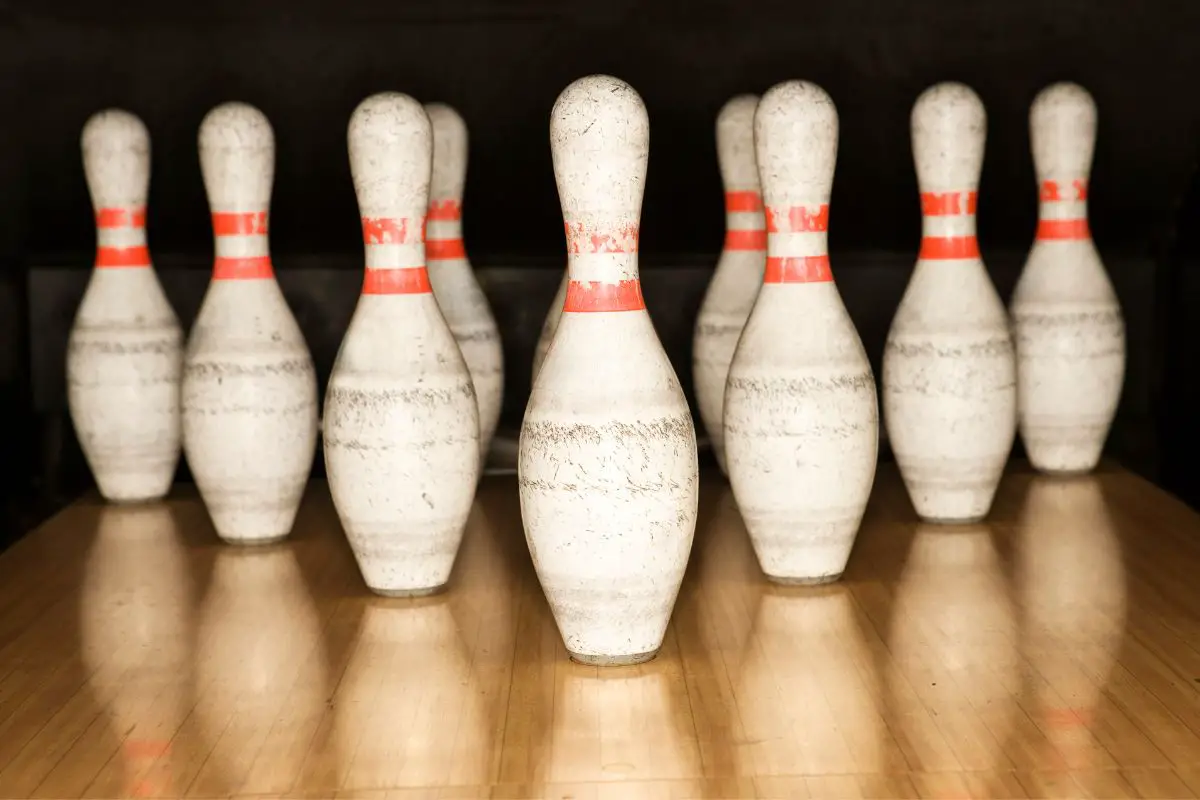Bowling alleys are beloved by families, friends, dates, and professionals. Most bowling alleys can hold anywhere from 12 to 36 lanes, but who knows the dimensions of bowling lanes?
While it might not seem necessary, understanding bowling lane dimensions can impact your gameplay. For professionals who are highly enthusiastic about the game, knowing the length and width of a lane might encourage them to play more tactfully.
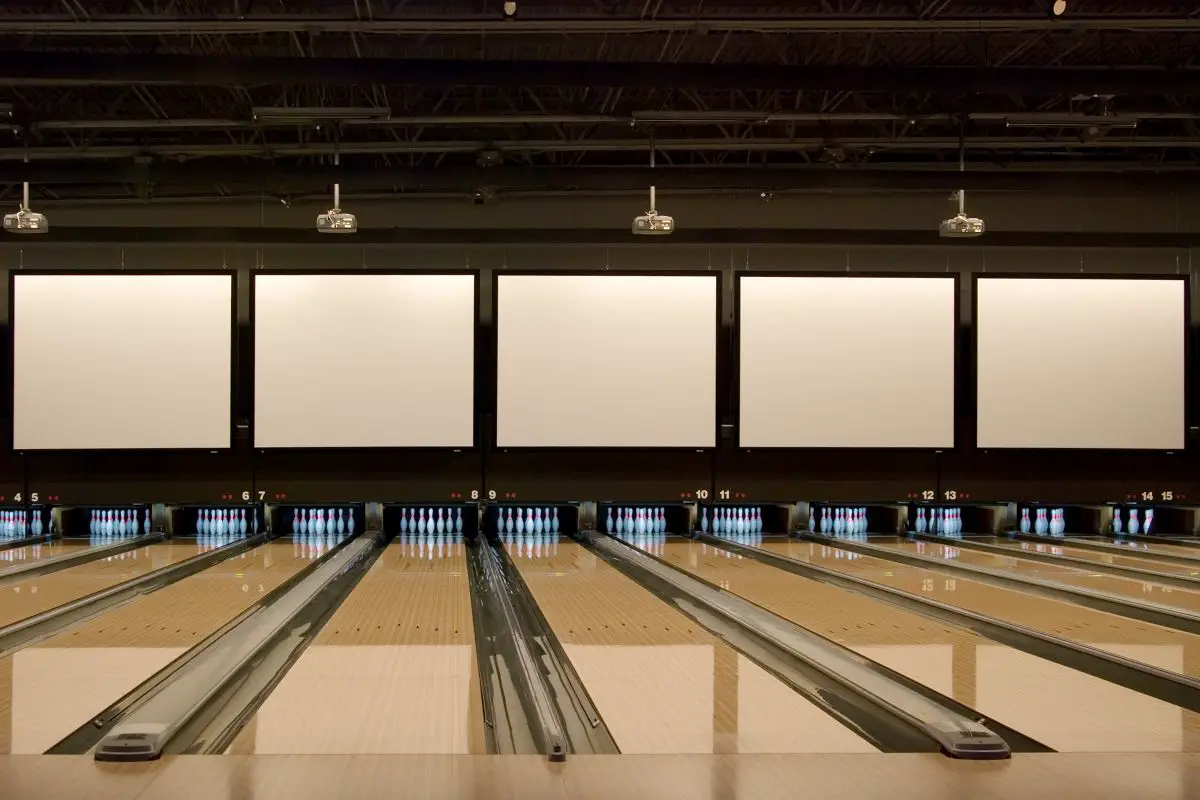
So, if you don’t know anything about the dimensions of a bowling lane, you’ve come to the right place. Here’s everything to know about bowling lane dimensions!
Dimensions Of A Bowling Lane
Let’s get into it.
Here are the main dimensions of a bowling lane:
- The lane is 60 feet long
- The lane is 42 inches wide
- The gutters are 9 ¼ inches wide on either side of the lane.
- The pin deck extending from the headpin is precisely 2 feet and 10 ¾ inches.
For clarification, the pin deck refers to the area where the pins are set at the back of the lane. The headpin refers to the pin at the top end of the triangle, which extends 2 feet and 10 ¾ inches from the back of the pin deck.
If you wanted to consider the length of the entire lane, including the pinsetter machine and the foul line, the length is 65 feet and 10 3/16 inches.
However, the length of a bowling alley is typically measured from the foul line to the headpin. The foul line is the visible line separating the player from the lane – if the player steps over the line, it is an automatic foul. The headpin refers to where the first pin on the triangle is located.
Several marks indicate when the foul line is approaching, which is ideal for professional bowling players who like to count how many steps they take before bowling the ball. There are two sets of approach dots – one set is 12 feet from the foul line, and another is slightly further at 15 feet from the foul line.
Without these dots, players might overestimate or underestimate the length of their strides, which can result in accidentally stepping over the line, resulting in a foul. On the other hand, players might fall half a step too short and begin bowling before they reach the foul line, which isn’t making use of the extra space.
Not only do these dots help to give a clear indication of where the player can stride up to the foul line, but it also encourages other players to move out of the way. While most groups of families and friends won’t use these approach dots, they are essential for professional bowling players.
These approach dots typically look like arrow indicators at the 15-foot mark before turning into dots at the 12-foot mark.
Bowling Lane Dimensions Explained
The bowling lane is 60 feet long (if you’re not counting the area from the pinsetter machine to the foul line) and is divided into three parts. These three parts are equally divided into sections of 20 feet lengths.
Why bowling lanes are divided into these equal parts is mainly unknown. However, it can be assumed that professionals use these sections to understand how their ball reacts to specific angles and oils. This might help them to understand the best way to curve a ball, given the oil situation on the lane.
What Are Bowling Lanes Made Of?
The 60-foot lanes of a bowling alley are made of slim wooden boards. These boards are about one inch wide; it takes roughly 39 to make up a whole bowling lane. These boards are treated and painted to withstand the weight of the bowling balls and the constant oiling.
Bowling lanes also feature wide gutters on each lane’s left and right side, designed to catch a rogue bowling ball that glides off the lane.
These gutters are typically made of steel to withstand the weight and power of the bowling ball. They are slightly oiled to encourage the ball to slide down to the pin deck area, which is then returned to the pinsetter machine.
Alongside the gutters are automatic retractive bumpers. These bumpers are commonly made of durable materials like steel and a sturdy plastic outer layer.
The bumpers are automatically erected and retracted depending on the player’s preference and work to prevent the ball from rolling into the gutter.
These bumpers are as long as the entire length of the lane and gutters, and even when they are erected, they do not affect the width of the lane.
Approach Area Regulations
Every bowling lane must feature an approach area that fits the appropriate regulations. This area must be the same width as the bowling lane and should go as far back as 15 feet from the foul line. There should also be approach dots to mark the 15-foot and 12-foot marks from the foul line.
Without this approach area, players risk injuring themselves or others. Bowling requires a stride up to the lane before they bowl, so there needs to be enough room for people to walk and swing the ball.
This area doesn’t get in the way of the socializing area behind the pinsetter machine, so there is little risk of someone being hit behind the player.
Now, here’s where bowling alleys tend to differ. The placement of the pinsetter and ball return machine is either closer to the foul line or the approach area. It doesn’t matter where the placement is as long as the machine doesn’t get in the way of the players.
Bowling Lane Arrows
If you have ever gone to a bowling alley and wondered why there are arrows before and on each lane, here’s what you need to know. The arrows placed before the foul line are known as approach dots/marks, which we have established are located 15 feet and 12 feet before the foul line.
There are also arrows on the lane itself. These arrows are about the width of the 1-inch boards and don’t exceed more than 1.25 inches in length. They are placed on boards 5, 10, 15, 20, 25, 30, and 35. The arrows are positioned in a V shape, with the last one pointing directly at the headpin.
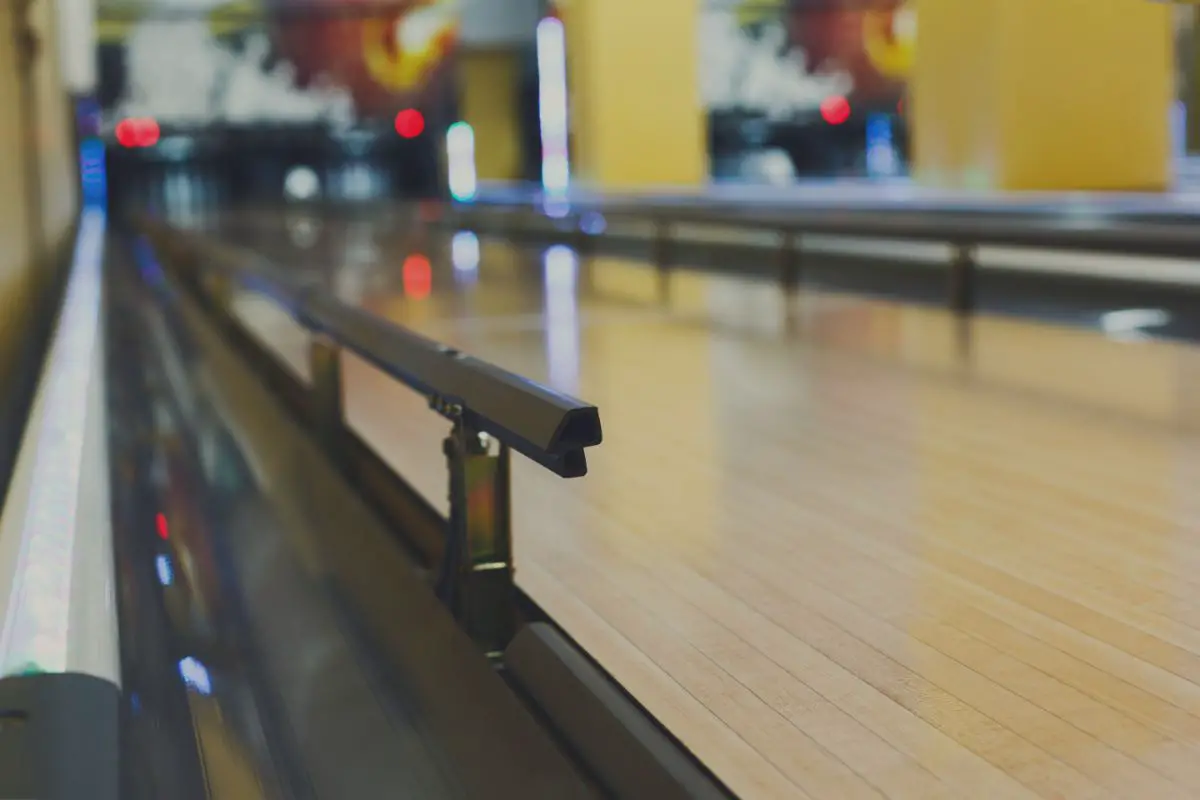
These arrows are black and pointed like a long triangle. Interestingly, not every bowling alley has these on the lanes. These location markers don’t do much for the gameplay, so they are not required to be on every lane in every bowling alley.
Again, nobody knows why the arrows are there on the lanes. It is assumed that professionals use these arrows as pointers when practicing, as they can indicate areas on the lane where the ball drifts to one side.
Pin Deck Dimensions
As mentioned earlier, the pin deck refers to the area where the pins are placed at the end of the bowling lane. This deck consists of 10 pins set in a V-shape formation, with the front pin (known as the headpin) located the closest to the player.
The pin deck is usually just over 2 feet long (2 feet and 10 3/16 inches, to be exact) from the back row of pins to the headpin. The pins are 4.75 inches wide and 15 inches tall and placed 7.25 inches apart. The pins are all evenly placed to try and make the game as fair as possible.
Bowling Lanes And Regulations
Every bowling lane must meet the requirements defined by the United States Bowling Congress, or USBC. The bowling alley cannot host leagues or championships without meeting these requirements and specific lane dimensions.
While this is fine for bowling alleys designed for kids and families, this limits the bowling alley from acquiring a crowd of committed bowling enthusiasts.
Home Bowling Lane Dimensions
If you’re lucky enough to have room for a bowling lane in your home, you’re probably wondering what dimensions you need to follow to make your bowling dream come true.
Ideally, you want enough space to cater to a 60-foot-long lane, an approach length of 16 feet, around 7 feet for the pins, and a service aisle of 3 feet. This should amount to 86 feet altogether.
However, you don’t necessarily have to match these requirements if you don’t have the space. Even if you can only fit a 55-foot-long bowling lane, this will still give you some good practice and add to the “arcade-style” aesthetic.
Above all else, you’ve got to make sure you build your home bowling lane on a surface that can withstand heavy weights. It’s not recommended to have a bowling lane on the house’s first or second floor because bowling balls, like the machines, are heavy.
Usually, people build their bowling lanes in the basement or an outside extension.
Summary
So, there you have it! Hopefully, this guide will have taught you everything you need to know about bowling lane dimensions.
Here’s another rundown of the critical dimensions for you to remember:
- The lane is 60 feet long from the headpin to the foul line
- The width of the lane is 42 inches
- The gutter is 9 ¼ inches wide and placed on either side of the lane
- The pins extend 2 feet and 10 3/16 inches from the back of the pin deck to the headpin
- The approach dots are situated 15 feet and 12 feet before the foul line
Bowling alleys must have lanes that meet these criteria according to the USBC’s regulations. Otherwise, they will not be allowed for use in leagues and competitions. If you wish to build a bowling lane in your home, you can meet these dimensions (or even have a slightly shorter lane at 55 feet) as long as you build the lane on a solid surface.
- A Comprehensive Guide to the Top Bowling Movies of All Time - December 23, 2023
- Bowling Shoes Selection Guide: How to Choose the Right Fit - September 27, 2023
- Bowling Ball Buying Guide: How to Choose the Right Ball for You - September 23, 2023
